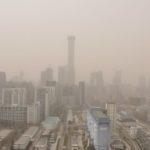 One of the defining features of the coronavirus pandemic has been the reduction in travel. Air travel has ground to a halt, while the number of journeys we take by car, train, and bus have significantly fallen. It resulted in a crash in oil prices, but also a significant reduction in air pollution.
One of the defining features of the coronavirus pandemic has been the reduction in travel. Air travel has ground to a halt, while the number of journeys we take by car, train, and bus have significantly fallen. It resulted in a crash in oil prices, but also a significant reduction in air pollution.
New research, from the Royal Belgian Institute for Space Aeronomy, highlights the scale of the fall as a result of lockdown measures around the world. The study found that nitrogen dioxide pollution fell by as much as 60% in northern China, Western Europe and the United States in the early months of 2020 as a result of falls in travel and industrial activity.
Unprecedented fall
Such a fall in emissions is unprecedented since air quality begun being monitored by satellites in the 1990s. The only event even close to having this kind of impact was related to the strict regulations surrounding the Beijing Olympics in 2008. While the researchers admit that this reduction is likely to be similarly transient, they nonetheless believe it provides a glimpse into a possible future where emissions regulations are stricter.
“Maybe this unintended experiment could be used to understand better the emission regulations,” they say. “It is some positive news among a very tragic situation.”
It’s not entirely good news, however, as the fall in nitrogen dioxide pollution has coincided with an increase in surface ozone levels. Ozone is a secondary pollutant caused by chemical reactions in the lower atmosphere. It’s harmful to humans at ground-level, and is believed to cause pulmonary and heart disease.
In industrial regions, surface ozone is destroyed by nitrogen oxides, so while air quality has improved around the world, surface ozone remains a challenge.
“It means that by just reducing the [nitrogen dioxide] and the particles, you won’t solve the ozone problem,” the researchers say.
The researchers used satellite data to gauge air quality changes in numerous countries, including China, the United States, South Korea, Italy, France, and Germany. The analysis revealed that in China, nitrogen dioxide pollution fell by 40%, while falls of between 20 and 38% were evident in Western Europe and the United States.